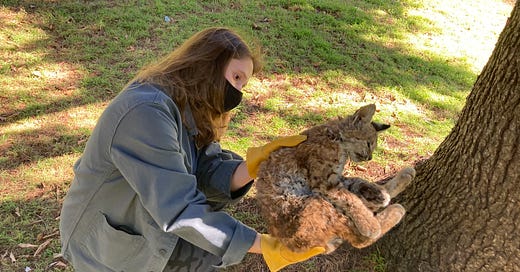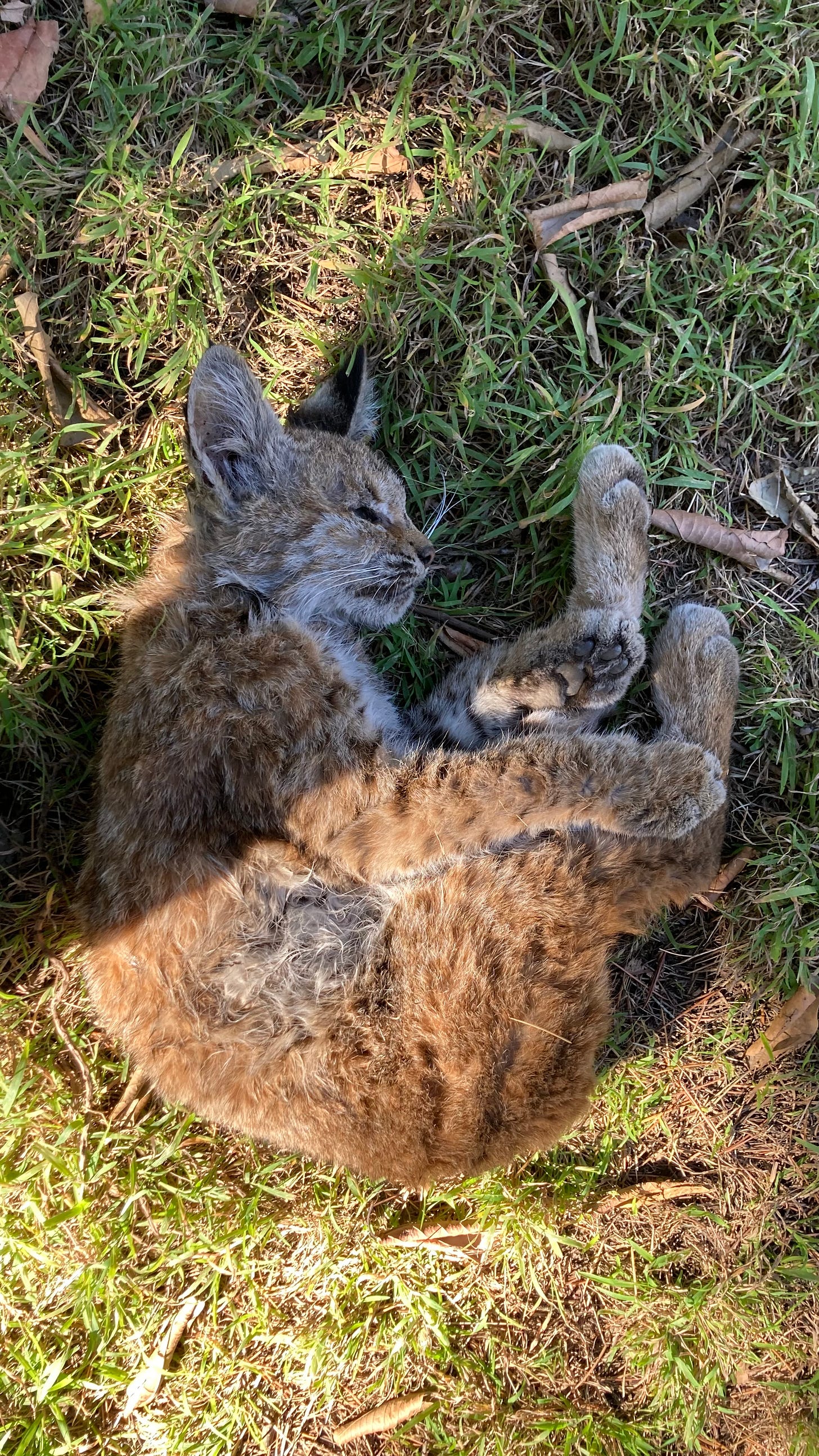Earlier today a woman told Evgenia that a cat or bobcat might be injured not far from our apartment. We got into the car to check it out and see if we could help. Turned out it was a bobcat cub, and it had already died. It was stiff and cold — probably poisoned by some rich asshole that lives in one of the mansions that are nestled up against Griffith Park in Los Feliz. It’s such a beautiful cat. And it probably died a slow, painful death.
As Evgenia was telling me, the problem is that local homeowners use poison to control rats and rodents. These poisons slowly kill these creatures by causing unstoppable internal bleeding. But they also travel up the food chain, crippling and killing mountain lions and bobcats and coyotes which can feed on the rodents. These poisons are spread so wide through the local ecosystem that nine out of ten mountain lions carry detectable amounts in their blood. “I would guillotine these people,” she said.
The Los Angeles Times:
The highly potent SGARs work by preventing clotting and causing rodents such as mice, rats, squirrels and gophers to die from internal bleeding.
The deaths can be slow, and the chemicals linger in the rodents’ bodies and can be passed on up the food chain to predators, scavengers and pets from the dead or dying rodents.
Wild animals killed include mountain lions, bobcats, badgers, golden eagles, great-horned owls, black bears, Pacific fishers, coyotes and endangered San Joaquin kit foxes, according to state regulators.
Last month, wildlife officials announced that an adult bobcat and a young mountain lion that were part of a study of big cats in the wilderness west of Los Angeles both died after ingesting rat poisons.
Consumer sales of SGARs were banned in 2014 and their use restricted to licensed exterminators. But the chemicals are still widely used commercially and in agriculture.
Supporters of the bill said stronger measures were needed because the 2014 restrictions haven’t reduced the impact on wildlife that play important roles as natural rodent predators.
A Department of Fish and Wildlife study found that from 2014 to 2018, the rodenticides were found in more than 90% of mountain lions tested, and in the majority of tested bobcats, Pacific fishers and northern spotted owls.
I looked it up and turns out that California banned the use these poisons just a few months ago.




